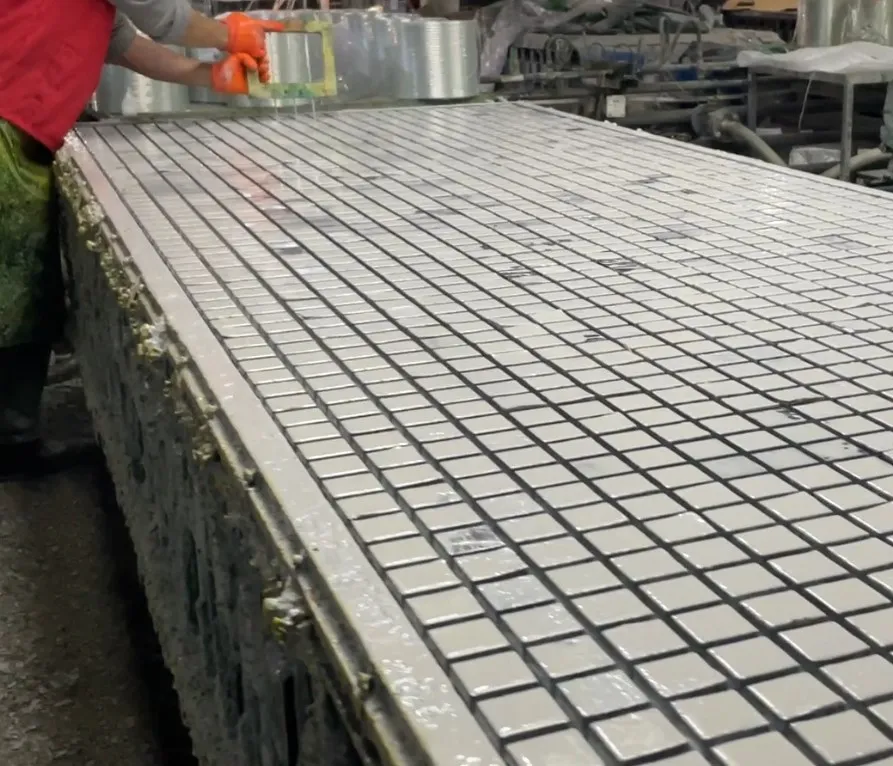loading...
- No. 9, Xingyuan South Street, Dongwaihuan Road, Zaoqiang County, Hengshui, Hebei, China
- admin@zjcomposites.com
- +86 15097380338
- Welcome to visit our website!
grp gratings
Understanding GRP Gratings Applications, Benefits, and Innovations
GRP gratings, or Glass Reinforced Plastic gratings, have become an essential component in various industries due to their strength, durability, and versatility. These products are made from a composite material consisting of fiberglass and resin, which together give GRP gratings their unique properties. In this article, we will delve into what GRP gratings are, their applications, benefits, and recent innovations in the field.
What Are GRP Gratings?
GRP gratings are constructed using woven glass fibers embedded in a resin matrix. This combination results in a lightweight yet robust material that is resistant to corrosion, chemicals, and environmental factors. Unlike traditional materials such as steel or wood, GRP gratings do not corrode or rot, making them ideal for a wide range of applications where moisture and chemicals are present. GRP gratings can be produced in various specifications, including different thicknesses, mesh sizes, and load-bearing capacities, allowing them to be tailored to specific requirements.
Applications of GRP Gratings
The versatility of GRP gratings makes them suitable for numerous industries. Some of the most common applications include
1. Walkways and Platforms GRP gratings are widely used for constructing walkways in industrial facilities, factories, and outdoor environments. Their slip-resistant surface ensures safety for personnel navigating potentially hazardous areas.
2. Drainage Covers Due to their excellent resistance to chemical substances, GRP gratings are prevalent in the wastewater treatment sector. They can withstand harsh chemicals without deteriorating, making them perfect for use in drainage systems.
3. Chemical Processing Many chemical plants utilize GRP gratings for platforms and walkways because of their immunity to corrosive substances. Using GRP helps to cut down maintenance costs in these settings.
4. Marine Industry Given their anti-corrosive properties, GRP gratings are ideal for installations near or in water. They can be utilized for docks, ship decks, and other marine applications where exposure to saltwater is prevalent.
5. Electrical Applications GRP gratings have insulating properties, making them suitable for electrical substations and environments where conductivity needs to be minimized.
Benefits of GRP Gratings
grp gratings

The adoption of GRP gratings offers several advantages over traditional materials
- Corrosion Resistance GRP grating systems are resistant to a wide range of chemicals, making them ideal for corrosive environments. Unlike steel, they don’t rust, and unlike wood, they don’t rot.
- Lightweight GRP is significantly lighter than steel, allowing for easier handling and installation. This lightweight characteristic can lead to reduced labor costs and accelerated project timelines.
- Durability The robustness of GRP gratings ensures a long lifespan, which minimizes replacement frequency and reduces overall costs.
- Safety Features Many GRP gratings are manufactured with slip-resistant surfaces, enhancing safety in workplaces and public areas.
- Customizability They can be produced in various colors and designs, allowing for aesthetic integration into different environments while also meeting safety regulations.
Innovations in GRP Gratings
Recent innovations in GRP technology have allowed manufacturers to overcome previous limitations, enhancing their performance features. Developments have led to the creation of fire-resistant GRP gratings, increasing their application in areas where fire safety is paramount. Additionally, advancements in the manufacturing process have improved the consistency and mechanical properties of GRP gratings, ensuring reliability in performance.
Furthermore, there is an ongoing trend toward sustainability in the production of GRP gratings. Manufacturers are exploring the use of recycled materials in constructing GRP, which contributes to environmental conservation and reduces the carbon footprint of production processes.
Conclusion
GRP gratings represent a significant technological advancement in the field of materials used for industrial and commercial applications. With robust properties such as corrosion resistance, lightweight, and durability, they offer practical solutions across various sectors. As innovations continue to emerge, the future of GRP gratings looks promising, expanding their potential applications and enhancing their effectiveness. Whether used in industrial facilities, marine environments, or chemical processing plants, GRP gratings are invaluable assets with the potential to improve safety and efficiency in countless applications.
-
GRP Structures: The Future of Lightweight, High-Performance EngineeringNewsJun.20,2025
-
FRP Water Tank: High-Performance Storage for Corrosive and Clean Water SystemsNewsJun.20,2025
-
FRP Square Tube: The New Industry Standard for Chemical and Structural ApplicationsNewsJun.20,2025
-
FRP Pultruded Profiles: The Ultimate Choice for Lightweight Structural StrengthNewsJun.20,2025
-
FRP Handrails: The Safer, Smarter, and Stronger Choice for Modern InfrastructureNewsJun.20,2025
-
FRP Grating: The Smart Solution for Durable, Lightweight Industrial FlooringNewsJun.20,2025
-
Why Choose a Galvanized Water Tank for Your Storage NeedsNewsMay.21,2025
